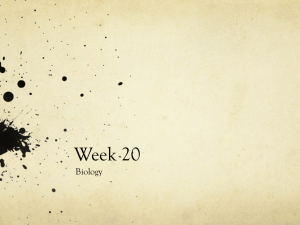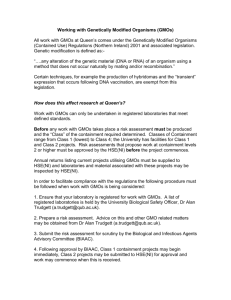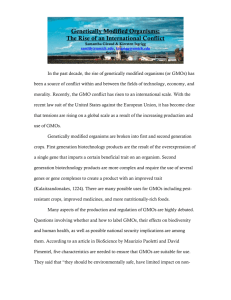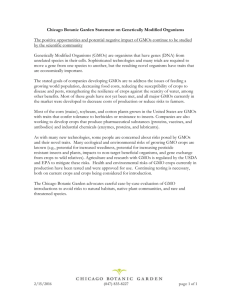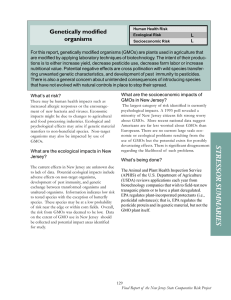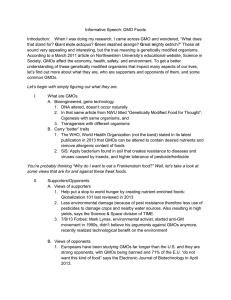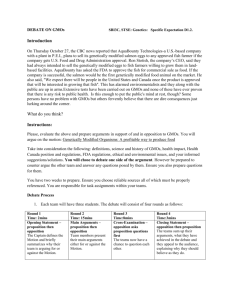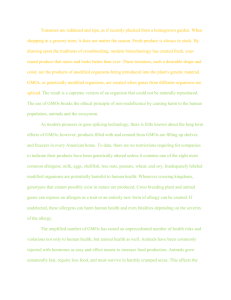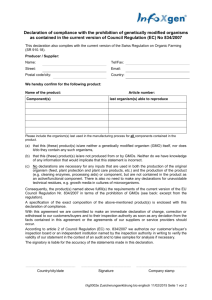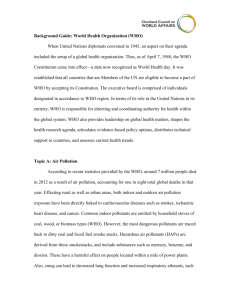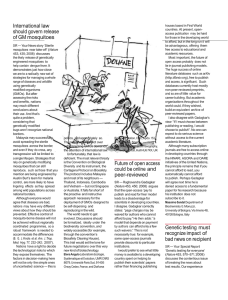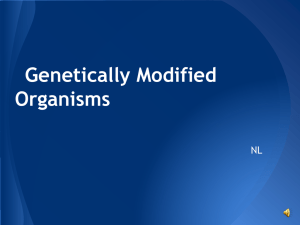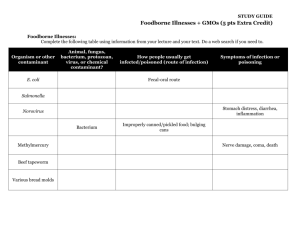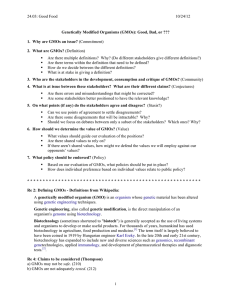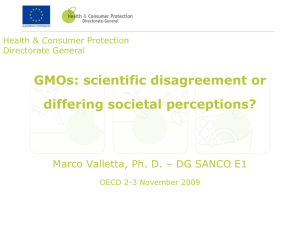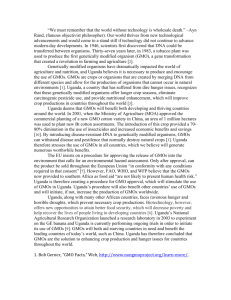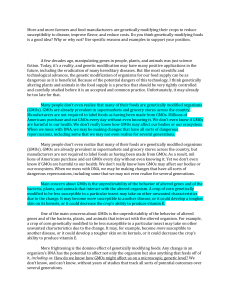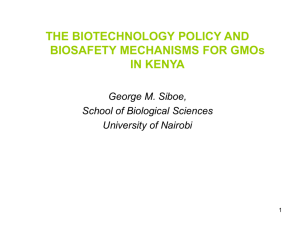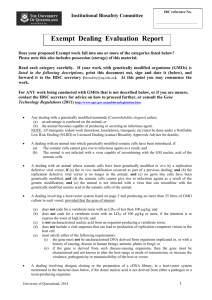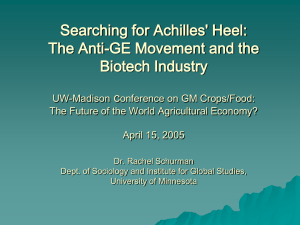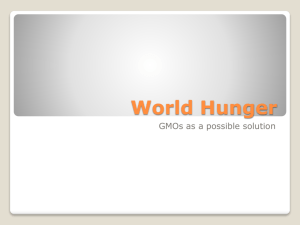In UN/SCETDG/20/INF
advertisement
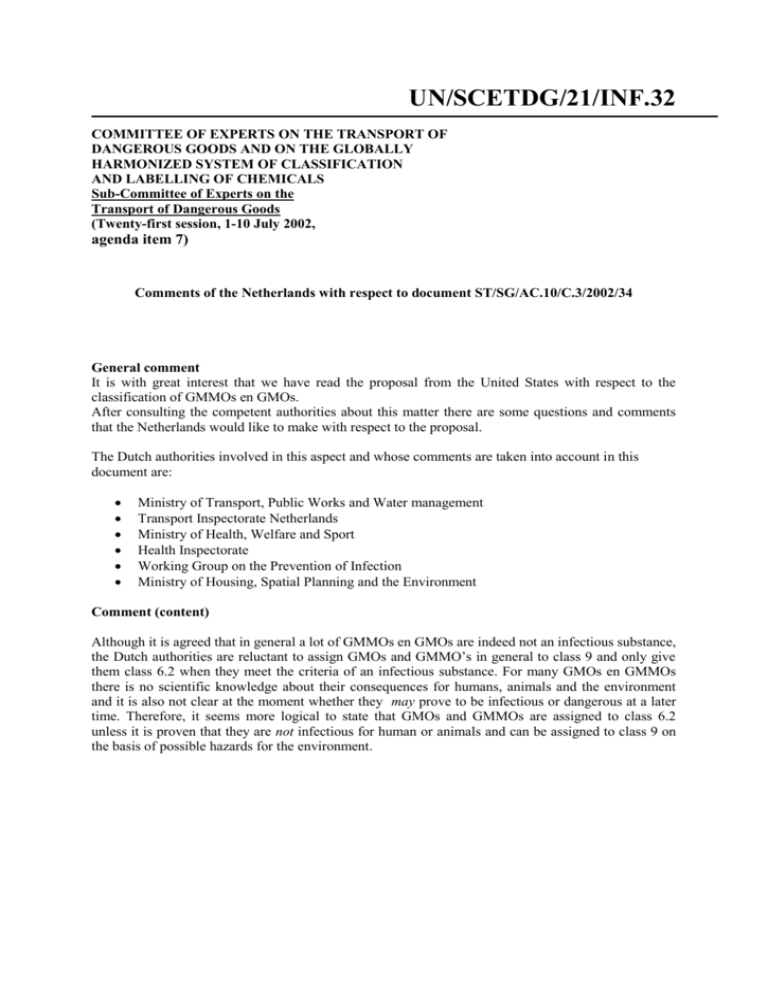
UN/SCETDG/21/INF.32 COMMITTEE OF EXPERTS ON THE TRANSPORT OF DANGEROUS GOODS AND ON THE GLOBALLY HARMONIZED SYSTEM OF CLASSIFICATION AND LABELLING OF CHEMICALS Sub-Committee of Experts on the Transport of Dangerous Goods (Twenty-first session, 1-10 July 2002, agenda item 7) Comments of the Netherlands with respect to document ST/SG/AC.10/C.3/2002/34 General comment It is with great interest that we have read the proposal from the United States with respect to the classification of GMMOs en GMOs. After consulting the competent authorities about this matter there are some questions and comments that the Netherlands would like to make with respect to the proposal. The Dutch authorities involved in this aspect and whose comments are taken into account in this document are: Ministry of Transport, Public Works and Water management Transport Inspectorate Netherlands Ministry of Health, Welfare and Sport Health Inspectorate Working Group on the Prevention of Infection Ministry of Housing, Spatial Planning and the Environment Comment (content) Although it is agreed that in general a lot of GMMOs en GMOs are indeed not an infectious substance, the Dutch authorities are reluctant to assign GMOs and GMMO’s in general to class 9 and only give them class 6.2 when they meet the criteria of an infectious substance. For many GMOs en GMMOs there is no scientific knowledge about their consequences for humans, animals and the environment and it is also not clear at the moment whether they may prove to be infectious or dangerous at a later time. Therefore, it seems more logical to state that GMOs and GMMOs are assigned to class 6.2 unless it is proven that they are not infectious for human or animals and can be assigned to class 9 on the basis of possible hazards for the environment. UN/SCETDG/21/INF.32 page 2 Comment (content) In the context of the Convention of Biodiversity (CBD) and its Biosafety Protocol (BSP), genetically modified organisms and micro-organism are referred to as living modified organisms and have a different definition from the definition in mentioned here. It would be desirable to endorse the definitions which are being used in the BSP context. Moreover, in technical terms, organisms comprise micro-organisms, the question is why these terms have has been separated in this definition. Moreover, the Biosafety Protocol does not make this distinction. As we understand this definition, genetically modified organisms, in contrast with genetically modified micro-organisms, would comprise plants and animals. Is that correct? Comment (content) Furthermore one of the authorities remarked that no reference is made to the work which is being done by the ICCP (Intergovernmental Committee for the Cartagena Protocol on Biosafety) of the Convention of Biodiversity (CBD) with respect to the handling, transport, packaging and identification of living modified organisms. Nevertheless in an informal paper of the Division 6.2 Working Group (UN/SCETDG/20/INF.22) is stated that: “Genetically modified micro-organisms are currently under discussion by the parties to the Biodiversity Convention and, consequently, no change has been made to the existing requirements in the Model Regulations”. In this context, an in-depth study is going on about measures which should be taken to avoid adverse effects on the conservation and sustainable use of biological diversity, taking into account risks to human health, and in particular the way to deal with food and feed. Therefore, insofar as GMOs or GMMOs are concerned, the requirements should be synchronized. Comment (content) The statement that is made in article 2.9.2.1 that class 9 substances are transported at temperatures greater than or equal to 100 oC or in liquid state with temperatures greater or equal to 240oC is confusing, while a lot of GMOs and GMMOs are transported in ‘dry ice’. 2
